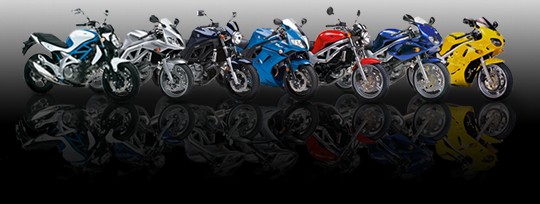 |
 |
| SV Talk, Tuning & Tweaking Discussion and chat on all topics and technical stuff related to the SV650 and SV1000 Need Help: Try Searching before posting |
 |
|
|
Thread Tools |
|
|
#11 |
|
Member
Mega Poster
Join Date: Nov 2016
Location: Shropshire UK
Posts: 1,364
|
Both lithium grease and vaseline are petroleum based.
__________________
2016 SV650 AL7 Courage is resistance to fear, mastery of fear, not absence of fear - Mark Twain |
|
|

|
|
|
#12 | |
|
Guest
Posts: n/a
|
Quote:
http://www.abbeysupply.com/Abbey_Sil...n_Grease1.html Both recommend not using on metal to metal contact. |
|

|
|
|
#13 |
|
Member
Join Date: Jun 2016
Location: Rochester,Kent.
Posts: 824
|
OK, so silicone grease is no good for the sliding pins, what about ceramic grease?
|
|
|

|
|
|
#14 |
|
Guest
Posts: n/a
|
|

|
|
|
#15 |
|
Member
Mega Poster
Join Date: Jul 2008
Location: here as devil's advocate
Posts: 11,559
|
RRG is fine for everywhere on callipers and yes that includes the back of pads and sliding pins. the only place i recommend using copper grease is blind holes for the pad retaining pins. btw if pads have anti squeal shims then you should never use a grease on them as well, that defeats the purpose of the shims, the shims should be dry.
RRG is not a silicone grease its a vegetable based (synthetic) grease with additives designed for rubber to what ever. its primary purpose is to keep the rubber form drying out and to form a barrier against ingress of water. think of it as a very very thick pure synthetic oil. RRG is also very high temp melting point. the reason its red is so that you dont go putting it on high speed bearings such as wheel bearings by mistake due to it not having anti wear additives. its fine on slow speed stuff like sliding pins though. think about how much the sliding pins actually move.. its ermm about 1mm at a time for the piston stroke and over a total wear of pad about 4-5mm. the piston and the sliding pins have a direct coalition of movement. top tips: dont go mad with RRG, you only need a smear of the stuff. when coating the seals rub the grease into the seals by putting RRG between thumb and fingers and rubbing the seal all round. pack the clean seal recesses with RRG, install the prep seals then remove excess RRG with your finger. coat the piston in a very very lightly in RRG then slide into calliper. same goes for the gators, lightly coat the rubber in RRG inside and out. smear some RRG on the sliding pins then assemble into dry holes, do not under any circumstances pack the sliding pin holes as it causes suction which cases pads to rub on discs. but most of all make sure that the seal recesses on the callipers are meticulously clean from 'furring (oxidisation of the alloy)' which is the cause of the calliper piston seizing in the first place. once done i would recommend commuters and high mileage riders do it once a year, low mileage and garage kept bikes every 3 years. my rule of thumb is for every new front tyre i do the front callipers and for every 2 new rear tyres i do the rear calliper. the wheel is off anyway so the callipers are off i might as well while i'm there. this just happens to be once a year for me. |
|
|

|
|
|
#16 | |
|
Member
Mega Poster
Join Date: Nov 2016
Location: Shropshire UK
Posts: 1,364
|
Quote:
I find the 'ears' that locate the pads can often be too big to fit the location slots and need a bit of filing, they should be a slightly loose fit to allow then to slide easily and apply a bit of moly or copper grease when assembling, if the lugs bind up in the slots (and sometimes corrosion can make them do this even if you are careful when fitting them) they can negate the 'self-centreing' action of the calipers and stay in contact with the disc, which can generate a lot of heat. Here is PDF link to TRW PFG110 white silicone brake grease, it says it is suitable for everything (including slide pins and bushes) except back of pads and brake pad supports (ears), and they make a tougher moly grease for that purpose. http://www.partinfo.co.uk/files/XZS120GB.pdf I think the warning about silicon not to be used in metal to metal bearings is a warning not to use it in highly stressed rotary (ball and roller) bearings instead of normal grease because the film strength of silcone is lower, and it does not have the high-pressure anti-scuff additives that 'proper' grease has (RRG carries the same warning). Just like you would not put copper grease into a normal bearing because its sh!t at lubrication and is mainly an anti-seize compound.
__________________
2016 SV650 AL7 Courage is resistance to fear, mastery of fear, not absence of fear - Mark Twain Last edited by SV650rules; 05-01-17 at 09:03 AM. |
|
|
|

|
|
|
#17 |
|
Member
Mega Poster
Join Date: Jul 2008
Location: here as devil's advocate
Posts: 11,559
|
that grease is very contradictory. it says its for rubber components in contact with DOT?? brake fluid but the actual packaging states that 'do not use as a general rubber grease on hydraulic components' well ermm callipers are hydraulic components so its no use.
stick to RRG, its tried and tested for the purpose it was designed for. dont file anything, if the part wont fit properly then return the part as its not right. there is no need to place grease at the location tabs and especially copper grease, if you put grease there then its just a potential contamination spot that water can wash out onto your discs. |
|
|

|
|
|
#18 |
|
Member
Mega Poster
Join Date: May 2015
Posts: 1,297
|
This whole thread got me thinking: why don't brake calipers on cars seem to need such regular maintenance? They don't seem to be sealed or protected from the elements any better than on a bike.
For example, a few years ago I owned a Passat PD130 diesel from new, for 5 and half years and 70,000 miles. When I sold it, it still had the factory brake pads and discs, and the brake fluid had never been changed, yet the brakes never gave me a moment of worry. Yet there's no way I'd run a bike for anywhere near that length of time with stripping the calipers and changing the fluid (I changed brake fluid on my SV shortly after buying it, as well as greasing the slide pins etc). Last edited by Craig380; 05-01-17 at 01:53 PM. |
|
|

|
|
|
#19 | |
|
Member
Mega Poster
Join Date: Jul 2008
Location: here as devil's advocate
Posts: 11,559
|
Quote:
|
|
|
|

|
|
|
#20 | |
|
Member
Mega Poster
Join Date: Nov 2016
Location: Shropshire UK
Posts: 1,364
|
Quote:
Once the tabs on the disc get tight / corroded then pads cannot move and the self-centering does not exist any more and the grease is there to keep corrosion in check. If I had taken back every pad where the tabs did not fit then I would have worn a groove back to the dealer, I always buy OEM pads and even they don't fit first time (they are just stamped out of steel plate, and have a taper as well as rough edges), they do however have a sachet of moly grease in the box for the rear of pads and the tabs. My mate who is a mechanic says it's common practice to check the tabs and remove a bit of metal so that they slide freely.
__________________
2016 SV650 AL7 Courage is resistance to fear, mastery of fear, not absence of fear - Mark Twain |
|
|
|

|
 |
|
|
 Similar Threads
Similar Threads
|
||||
| Thread | Thread Starter | Forum | Replies | Last Post |
| Front brake overhaul | Benjins | SV Talk, Tuning & Tweaking | 12 | 10-10-16 10:48 AM |
| Brake Caliper Overhaul - Bit of a How To | SV_archie99 | SV Talk, Tuning & Tweaking | 14 | 20-11-14 10:01 PM |
| Brake caliper overhaul | muzikill | SV Talk, Tuning & Tweaking | 51 | 18-06-13 08:51 AM |
| Front brake caliper overhaul. | Danny Dickinson | SV Talk, Tuning & Tweaking | 24 | 31-08-12 11:16 AM |
| Front caliper seals/overhaul `99 curvy | leebex | SV Talk, Tuning & Tweaking | 14 | 04-02-10 11:06 AM |